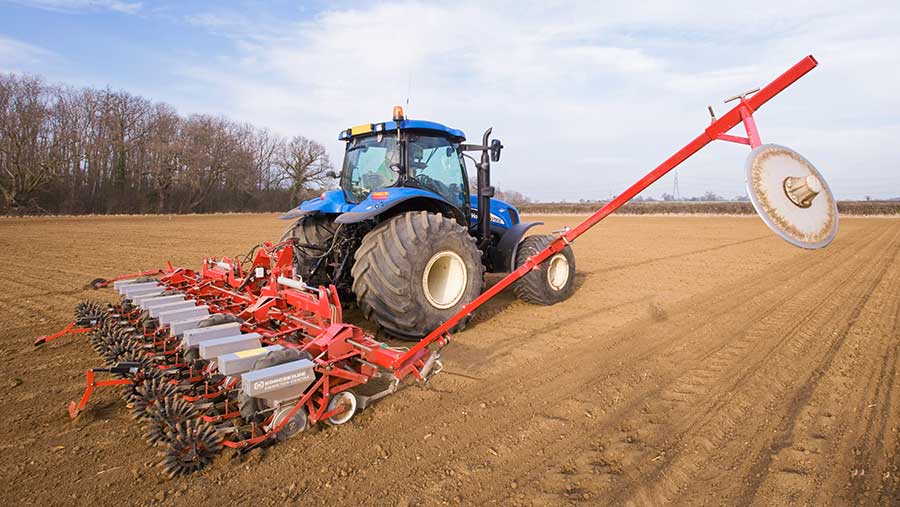Virus yellows warning for beet growers after mild winter and loss of neonics
 © Tim Scrivener
© Tim Scrivener Sugar beet crops are at high risk from virus yellows this summer because of higher aphid populations arising from the mild winter, says the latest disease forecast.
Virus yellows is a largely forgotten disease carried by aphids that for many years has been well controlled by the routine use of neonicotinoid seed treatments.
However, this coming season is the first time in 25 years that these seed treatments are not available to protect the crop from aphids, leaving beet vulnerable to the disease.
See also: Tips on growing beet without neonic seed treatments
The potential yield loss was demonstrated in a trial carried out in northern France in 2017, the ITB – the French sugar beet growers association – reported heavy (25%) infection with virus yellows in a crop where neonicotinoid seed treatments were not used.
This resulted in a 36% yield reduction in sugar yield in infected patches.
To help farmers prepare for the season ahead, the British Beet Research Organisation (BBRO) has produced disease forecasts for three different regions and in the worst-case scenario, it predicts more than 50% infection in the East with later drilling (see table).
Virus yellows forecast predicts high levels of infection in August |
||||
| Region | Virus yellows (%) on sowing dates of | Mean temperature (C) | ||
| 15 March | 30 March | 15 April | ||
| East (Bury, Cantley, Wissington) | 29.9 | 39.5 | 54.3 | 5.28 |
| North (Newark) | 22 | 31.2 | 47 | 4.6 |
However, the BBRO points out that the virus risk can be reduced by the use of a timely application of an aphidcide along with good crop hygiene, crop monitoring and ensuring crops reach the 12-leaf stage as quickly as possible.

